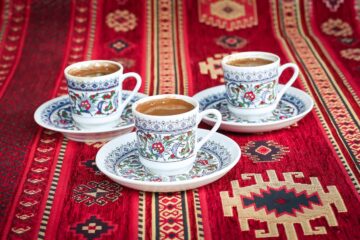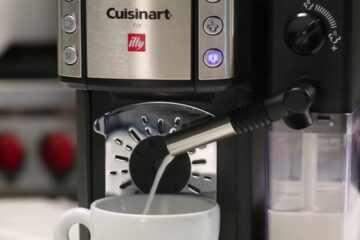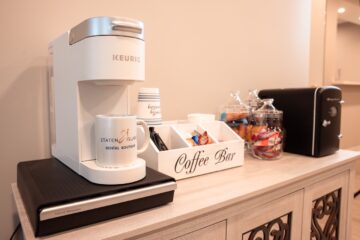Cappuccino vs. Latte: What’s the Difference?

When stepping into a coffee shop, you’ll often find cappuccino and latte listed side by side on the menu. While they both stem from a base of espresso and steamed milk, the differences in milk-to-foam ratio, texture, flavor, and presentation give each drink a unique identity. Whether you’re a casual coffee drinker or an aspiring barista, understanding these distinctions can enhance your coffee experience and help you choose the drink that best suits your palate.
1. Key Differences at a Glance
| Feature | Cappuccino | Latte |
|---|---|---|
| Espresso | 1–2 shots | 1–2 shots |
| Steamed Milk | Moderate amount | Larger amount |
| Milk Foam | Thick, dense layer (~1/3 of the drink) | Light layer (~1 cm, mostly steamed milk) |
| Texture | Foamy, airy | Creamy, smooth |
| Flavor Profile | Stronger espresso flavor | Milder, milkier flavor |
| Serving Size | 5–6 oz (150–180 ml) | 8–12 oz (240–350 ml) |
| Presentation | Typically served in smaller ceramic cups | Served in larger cups or glass mugs |
2. Composition: Milk-to-Espresso Ratio
Cappuccino
Traditionally made with equal parts espresso, steamed milk, and milk foam.
The foam layer is thick and velvety, forming about a third of the drink.
Milk is steamed to create a dense froth, which acts as a cushion for the espresso.
Latte
Made with 1/6 espresso, 4/6 steamed milk, and 1/6 milk foam.
The steamed milk dilutes the espresso more than in cappuccino, creating a milder taste.
Foam is minimal and mainly used to cap the drink, often decorated with latte art.
3. Taste and Texture
Cappuccino: More robust coffee flavor due to less milk; foam adds a light, airy texture. The layered structure gives a gradual shift from foam to milk to espresso as you sip.
Latte: Much creamier and smoother with a subtle coffee presence. Ideal for those who prefer a balanced, milk-forward drink.
4. Cultural and Regional Variations
| Region | Cappuccino | Latte |
|---|---|---|
| Italy | Served only in the morning; never after meals | Rarely ordered by locals; “latte” just means milk |
| USA/UK | Available all day; often with flavored syrups | Commonly customized (vanilla, caramel, etc.) |
| Australia/NZ | Less foamy, closer to a flat white | Popular alternative to flat white |
In Italy, ordering a “latte” will likely get you a glass of milk unless you say “caffè latte.” Outside Italy, lattes have evolved into a customizable drink, often with syrups and plant-based milks.
5. Calorie and Caffeine Content
| Drink | Approx. Caffeine (per 8 oz) | Calories (with whole milk) |
|---|---|---|
| Cappuccino | 80–120 mg | 70–100 kcal |
| Latte | 80–120 mg | 120–200 kcal |
Both drinks typically contain the same amount of espresso, so their caffeine content is similar, though variations depend on the number of shots. Lattes contain more milk, thus more calories, especially when using whole milk.
6. Which Should You Choose?
| Your Preference | Recommended Drink |
|---|---|
| Strong coffee flavor | Cappuccino |
| Creamy, milk-dominant taste | Latte |
| Lighter mouthfeel | Cappuccino |
| Larger, more filling beverage | Latte |
| Great for latte art | Latte |
The cappuccino and latte might appear similar on the surface, but their milk preparation, texture, and flavor are distinct. If you’re after a balanced, milk-heavy drink, a latte is your best choice. But if you enjoy the intensity of espresso complemented by frothy milk, the cappuccino offers a classic, satisfying experience.
References
Specialty Coffee Association: www.sca.coffee
National Coffee Association USA: www.ncausa.org
Barista Hustle: “Milk Texturing Techniques and Science”
Perfect Daily Grind: “Cappuccino vs Latte: Which is Better?”















